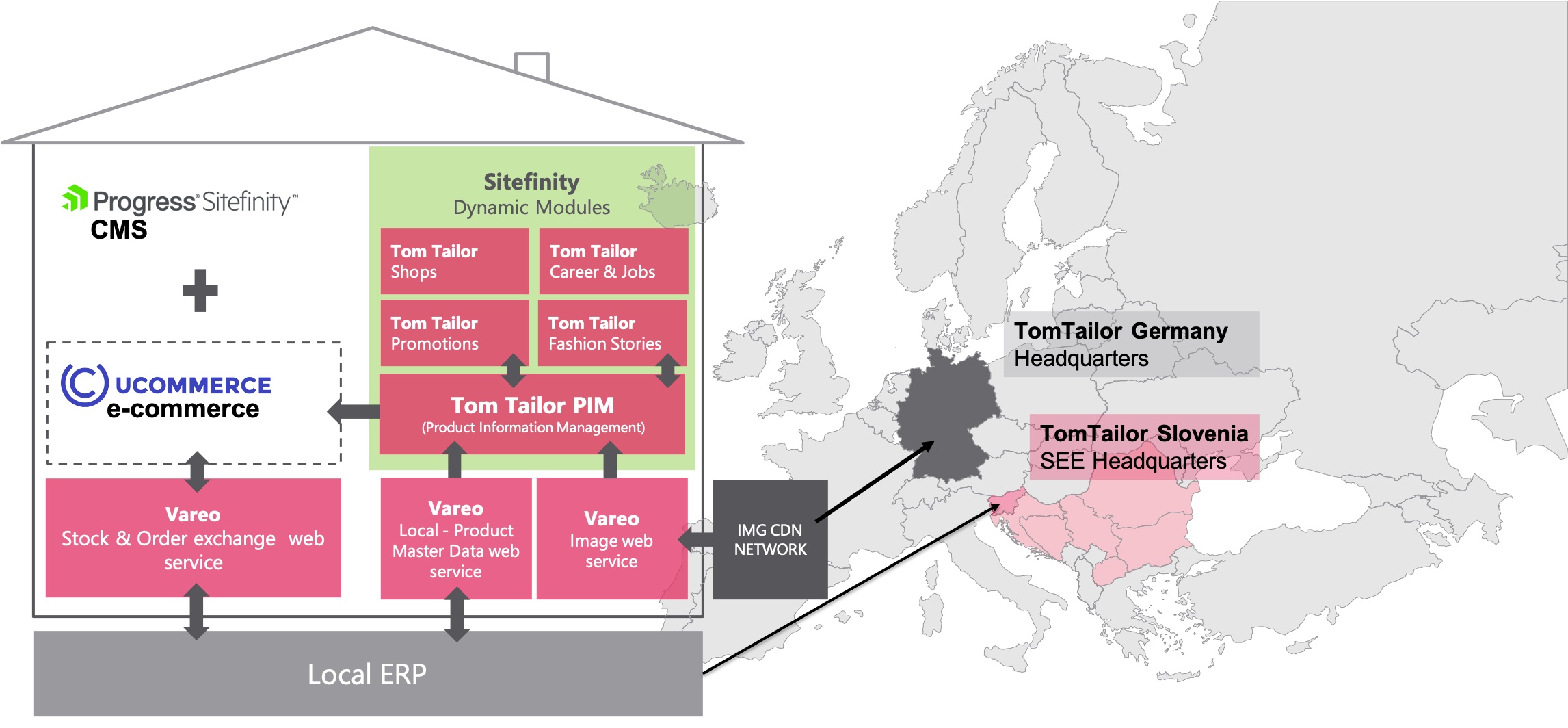The Key to Ecommerce Success: Aligning Content and Commerce

Content and commerce tend to be a house divided, resulting in ecommerce experiences that are difficult to manage and difficult to make profitable. But a new approach to managing content and commerce may address some of the common pitfalls in the process.
The marriage of content and commerce should be a glorious union. Imagine, controlling every aspect of the ecommerce experience, from payment processing down to content publishing—all from one place. Boom, ecommerce euphoria.
Unfortunately, the reality is rarely as rosy.
“Separation of concerns” is the modus operandi, with many businesses using a dozen different systems to cover every aspect of the overall ecommerce experience. A CMS oversees the web experience. An ecommerce platform handles the selling process. Then there are all sorts of systems caught in the middle, from product information management to invoicing.
The whole thing is more an “entanglement” than a “marriage” in many implementations. A bunch of different systems, each doing their own thing and tripping over each other constantly.
And let’s face it… it sounds like a nightmare, but there’s a reason it’s done like this. The fact is that many do-it-all ecommerce platforms have simply failed to offer a better alternative. They provide a smattering of relevant capabilities, but it comes at the cost of the depth that sacrifices being able to streamline and scale ecommerce operations while creating a frictionless online experience.
Detangling Your Ecommerce Experience (Without Spending a Fortune)
Managing a compelling website is super important to being successful in the current business climate. But being able to manage the entire shopping experience with ease is equally important. Today, it’s how a majority of business make their money.
Built with extensibility in mind, Sitefinity is made precisely for situations like these. By teaming up with Ucommerce, a leading .NET commerce engine, you get the best of both worlds: powerful CMS and ecommerce capabilities on command, with no costly, time-consuming integration hurdles to jump over.
Like Sitefinity, the Ucommerce platform was built around the concept of extensibility. This is important because, just as no two businesses are the same, no two ecommerce experiences are the same either. So instead of a jack-of-all-trades solution that offers cookie-cutter ecommerce experiences, you get platform that you can mold to fit your specific business requirements and strategy—all while being easy to implement and cost-effective.
This approach enables your organization to focus on breaking down the silos that hinder your selling capabilities and prevent you from delivering a richer ecommerce experience. If you’re already a Sitefinity user, this also means that you can do everything from the comfort of your favorite content management system.
And if you’re not a Sitefinity customer, the transition is equally seamless. Our friends over at Vareo, a Slovenia-based marketing technology agency, actually just went through the process of creating a brand-new ecommerce experience from the ground up for their client, Tom Tailor.

Here’s how they did it—and why Sitefinity and Ucommerce were key to addressing the common headaches that plague these projects.
From Out of Style to In Vogue: Tom Tailor’s New Look
If you don’t know Tom Tailor, they are a German lifestyle fashion brand with locations across Europe.
Tom Tailor’s Central and Eastern Europe branch has been particularly successful in serving customers at brick-and-mortar stores over the years. In fact, they were so successful they didn’t even feel the need to sell their products online.
Of course, that all changed when the Coronavirus pandemic hit. As was the case with many brick-and-mortar retailers, Tom Tailor found themselves suddenly in need of an ecommerce store to serve regional customers.
It was evident right away that this was going to be a problem. The platform they were using to manage their digital presence just wasn’t suited for ecommerce. In fact, it was so difficult to manage that Tom Tailor couldn’t even do basic content updates without help from the implementing agency.
After looking at seven different proposals, Tom Tailor ultimately went with Vareo’s proposal. This involved a full-scale migration of the Central and Eastern European site to Sitefinity and Ucommerce.
Sitefinity won out because it made managing the entire ecommerce experience from one platform easy. Plus, it allowed them to minimize their IT overhead costs better than other solutions on the market.
“With other ecommerce systems, you always run into the problem of content management,” said Gorazd Planinc, who is the marketing technology architect at Vareo. “You wind up constantly moving between systems to run different parts of the business.”

“Sitefinity with the Ucommerce integration enabled us to do everything from one place, it was a very future-oriented solution,” he added. “You can easily combine ecommerce content with editorial content. This is real power when it comes to selling products.”
From both the perspective of both Vareo and Tom Tailor, Sitefinity eliminates many of the headaches associated with building scalable ecommerce experiences. On the partner side, an extensible platform makes integrating the necessary systems quick and painless, while keeping things secure.
From Tom Tailor’s perspective, the ease of content editing is a major win. Now the company’s non-technical marketing team can take full control of their site, without relying on assistance from a partner. They also don’t have to worry about navigating multiple systems or manually updating content that should be updated in real-time, which makes the prospect of managing the end-to-end ecommerce experience less intimidating.
So far, the launch of the new ecommerce experience is still in its early stages, available only to customers in Slovenia. But with the help of Sitefinity, Ucommerce and Vareo, Tom Tailor expects to roll out the site to customers across all seven countries in the CEE region soon.
Transform Content and Commerce with Sitefinity and Ucommerce
Whether you’re turning to ecommerce as a new revenue stream like Tom Tailor or you’re trying to improve your existing ecommerce experience, there is no denying the value of ecommerce. This is especially true after the events of 2020, which caused a seismic shift in consumer behaviors and pushed everything into digital.
Unfortunately, most ecommerce platforms are poor matchmakers. Instead of highlighting the strengths of a combined content and commerce approach, they accentuate the drawbacks by stretching themselves too thin.
Ucommerce for Sitefinity offers a unique solution to this challenge. It gives you a powerful ecommerce engine that compliments a dedicated content management system, and makes it easy to integrate everything under a single roof.
See why brands like Tom Tailor go this route with a live demo of Ucommerce for Sitefinity in action.

